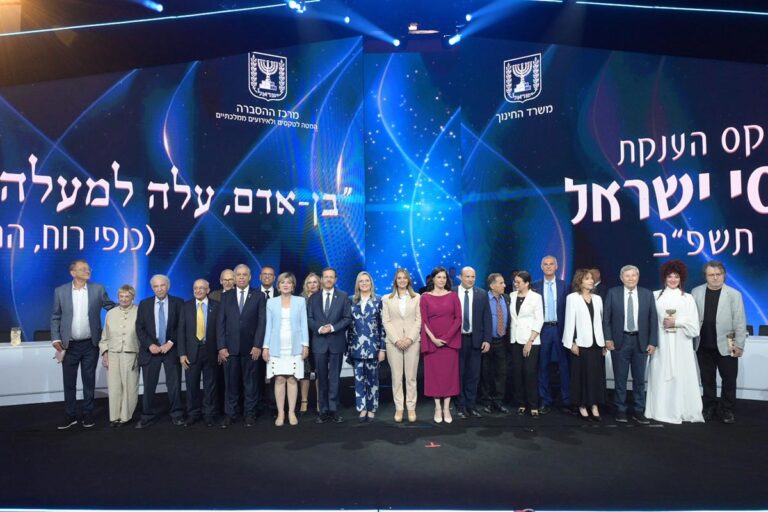
Starting on April 25 at sundown, Israel will celebrate its 75th anniversary of statehood. In that time, the country has produced world leaders, inventors and artists who have changed Israel and the world at large.
Many of these people are honored as recipients of the Israel Prize. Each year on Yom Haatzmaut, the Israeli government bestows the highest civilian honor to those who have excelled in their field or contributed strongly to Israeli culture.
The prize is awarded in four areas: lifetime achievement, the sciences, culture (which includes the arts, communications and sports) and the humanities (Jewish studies, social sciences and rabbinal literature).
The Israel Prize has honored hundreds of brilliant individuals across a variety of industries since it was established in 1953. However, it has also received criticism through the years for underrepresenting non-Ashkenazi Israelis and women in the winners.
This year, 12 Israelis will be honored on April 26 with the Israel Prize. Before then, get to know some of the previous awardees of the prestigious honor.
Shmuel Yosef Agnon (1954)
Shmuel Yosef Agnon, also known as Shai Agnon, is considered to be one of the forces that established a literary culture in Israel. At age 20, he moved from his native Galicia (in Eastern Europe) to British Mandate Palestine where he began a career in writing.
While he initially wrote short stories and novellas, Agnon’s book “The Bridal Canopy” cemented him as a household name.
Agnon’s work discussed the tension between modernity and traditional Jewish life, highlighting the gradual fading of the traditions of the shtetl. Agnon was praised for capturing that strife through the language of his work, mixing modern and rabbinic Hebrew.
In 1966, Agnon was awarded the Nobel Prize in Literature, Israel’s first, for his work depicting Jewish people and life.
Called “a man of unquestionable genius” and “one of the great storytellers of our time,” Agnon died in Jerusalem on Feb. 17, 1970.
Yitzhak HaLevi Herzog (1958)
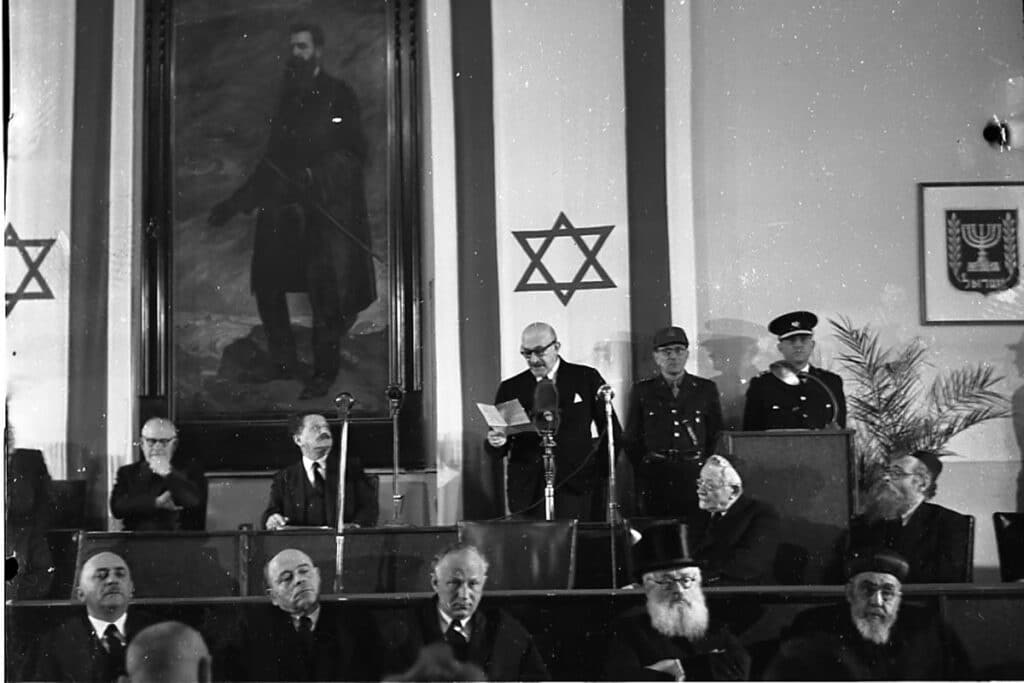
Born in Russian Poland, Rabbi Isaac Herzog moved with his family to Leeds, United Kingdom, in 1898 at the age of 10. He was primarily educated by his father, a rabbi, before being sent to a school in Paris.
Herzog’s doctoral thesis at the University of London argued that he found the most likely source for Tekhelet, the blue dye formerly used to make Tzitzit, which was met with much debate and disagreement.
After serving as the rabbi of Belfast between 1916-19, Herzog was appointed as the rabbi of Dublin. As a fluent Gaelic speaker, he became extremely popular, eventually becoming the first Chief Rabbi of Ireland from 1921-36. Herzog supported the Irish Republican cause for the rest of his life.
Following his term, Herzog made aliyah and became the Ashkenazi Chief Rabbi of Mandate Palestine and of Israel after its establishment, from 1936 until his death in 1959.
He was also the father of Chaim Herzog and grandfather of Isaac Herzog, both of whom later became Presidents of Israel.
Herzog died on July 25, 1959.
Golda Meir (1975)
Golda Meir, known as “the Iron Lady of Israel,” was born in Kyiv, Ukraine and immigrated to Wisconsin when she was eight.
After moving to a kibbutz in British Mandate Palestine when she was 23, Meir turned to advocacy work. She attended the Évian Conference in 1938, when 32 countries came together to address the escalating problem of Jewish refugees following the Nazis’ rise to power.
She observed how every single country expressed sympathy for the state of the Jews, but few offered to help, famously saying after the conference: “There is only one thing I hope to see before I die and that is that my people should not need expressions of sympathy anymore.”
Following a stint as minister plenipotentiary to the Soviet Union, Meir joined the Knesset under Democratic Socialist party Mapai. Meir served until 1974, including periods in which she was appointed labor minister and foreign minister.
Serving as the fourth Israeli prime minister — the first and only female head of government in Israel and the Middle East — Meir’s government was hit with the Yom Kippur War in 1973. Unprepared, Israel faced heavy losses before the tides turned in its favor. However, at that point the public had turned against Meir, leading to her resignation.
She died on Dec. 8, 1978.
Tal Brody (1978)
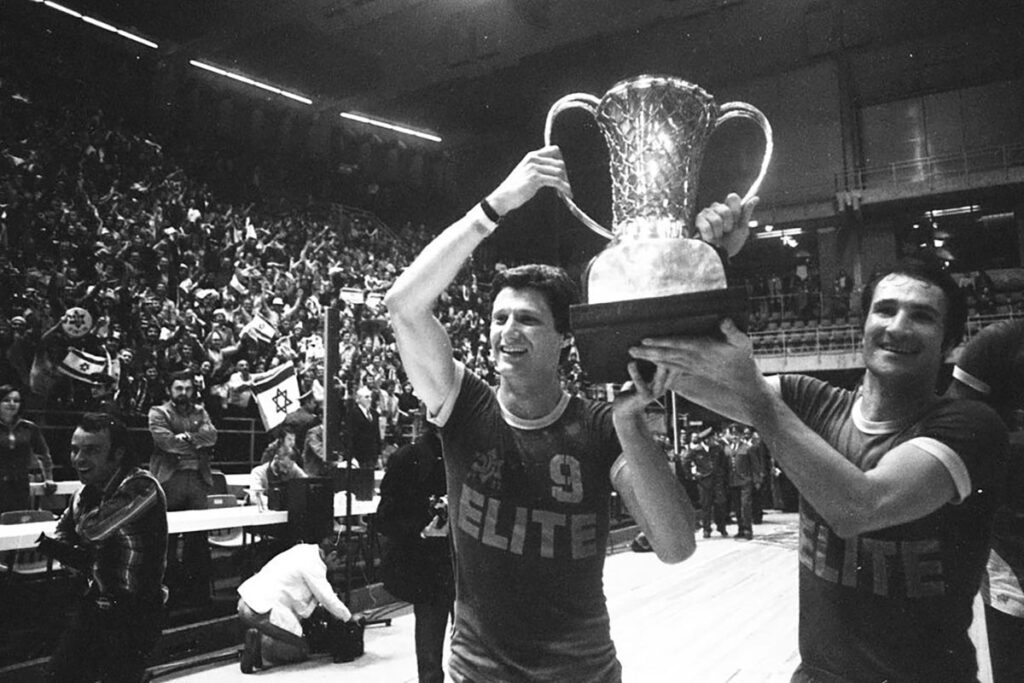
Considered Israel’s first “sports hero,” basketball star Tal Brody was born in New Jersey and spent the early years of his life competing for the U.S.
After being named a 1965 All-American basketball player while playing for the University of Illinois, Brody led Team USA to a gold medal at the 1965 Maccabiah Games. That same year, he was drafted 13th overall in the NBA draft but opted to pursue a master’s degree instead.
Tal joined Maccabi-Tel Aviv and helped them finish second in the European Cup Basketball Championship. For this herculean feat, Brody was named Israel’s Sportsman of the Year in 1967.
He continued to represent Israel in the 1969 Maccabiah Games, winning a gold medal. The next year, Tal made aliyah.
Brody also led Team Israel to a European Cup Championship in 1977, marking Israel’s first. His hardware includes 10 Israeli championships and six State Cups.
Naomi Shemer (1983)
Championed as the “first lady of Israeli song and poetry,” Naomi Shemer is best known for her song “Yerushalayim Shel Zahav” (Jerusalem of Gold) about the Jewish peoples’ 2000-year longing to return to Jerusalem.
Following the Six-Day War, the song became a de facto second anthem for Israel, and Shemer added another verse to celebrate Jerusalem’s reunification.
Shemer’s talent extended into bringing English and Hebrew poetry into song, such as “O Capitan, My Capitan” by Walt Whitman. While the original poem is about the assassination of Abraham Lincoln, Shemer translated it into Hebrew as a musical tribute to Yitzhak Rabin following his assassination.
The acclaimed musician and songwriter also translated the Beatles’ “Let it Be” into Hebrew in 1973. “Lu Yehi” served as a peace anthem in the Yom Kippur War.
Shemer passed away on June 26, 2004.
Adin Steinsaltz (1988)
Rabbi Adin Steinsaltz dedicated his life to making Jewish texts accessible, particularly through his renowned Steinsaltz edition of the Talmud.
Originally published in Modern Hebrew, it has since been translated into English, French, Spanish and Russian, and features his translation of the Talmud with commentary.
Born in Jerusalem in 1937, Steinsaltz pursued studies in mathematics, physics, chemistry and rabbinical studies at the Hebrew University.
In 1965, he began his epic work of translating and commenting on the Talmud in 1965, which he completed after 45 years with 63 volumes.
Recognized by Time Magazine as a “once-in-a-millenium scholar,” the Israeli Chabad rabbi also wrote around 60 books, including his famous work of Kabbalah, “The Thirteen Petalled Rose.”
In 1972, he joined the Pardes Institute of Jewish Studies staff in Jerusalem, where he continued his mission of providing entry points into Jewish texts.
He also worked with the Jewish community in the former Soviet Union, establishing the first university-level Jewish studies programs there at the Jewish University in Moscow and Saint Petersburg.
Steinsaltz died August 7, 2020.
Amos Oz (1998)
Amos Oz wrote over 40 books, which have been published in 45 languages — more than any other Israeli writer. Oz also was a professor of Hebrew literature at Ben-Gurion University. He used his platform as an author to advocate for a two-state solution between Israel and Palestine.
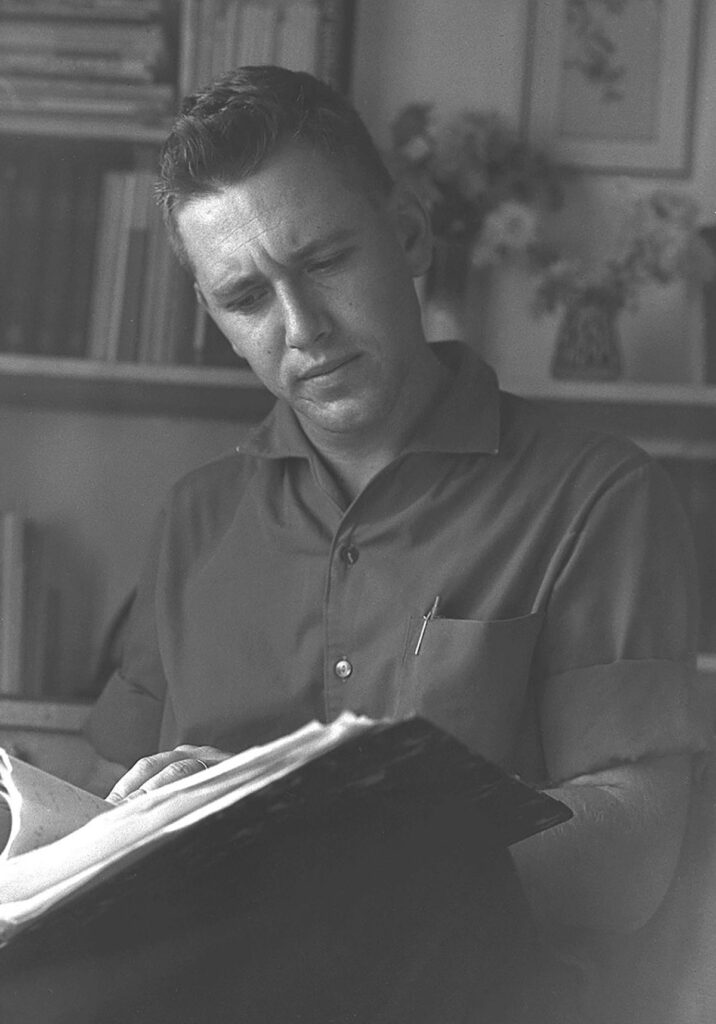
Oz’s body of work includes novels, short story collections, essays and children’s books. His best-known novels include “My Michael” (1968), “A Perfect Peace” (1982) and “The Hill of Evil Counsel” (1976).
The Jerusalem-born author received many accolades for his writing and advocacy, including the Israel Prize, the Friedenspreis des Deutschen Buchhandels (a German peace prize), and the Legion of Honor of France (the highest civil honor in France).
Oz died on Dec. 28, 2018.
Shulamit Aloni (2001)
The founder of the Ratz party — which was eventually folded into the left-wing Meretz party — Shulamit Aloni spent her life advocating for human and civil rights. Aloni was a passionate advocate for women’s rights and the separation of religion and state in Israel.
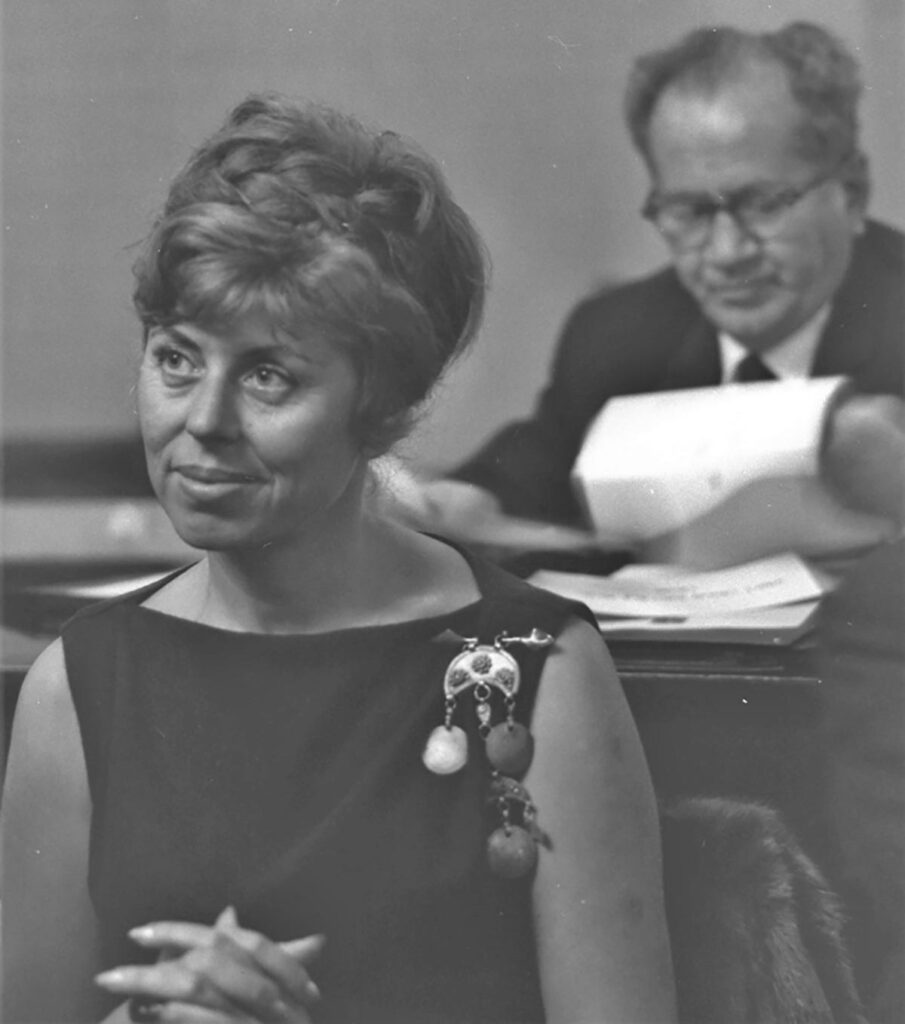
In 1982, during the Lebanon War, Aloni founded the International Center for Peace in the Middle East and dedicated the rest of her life to promoting a two-state solution.
The women’s rights activist led the opposition in the Knesset between 1988-90 and served various stints as education, culture and communications minister for Israel in the 1990s.
Aloni died on Jan. 24, 2014.
Ephraim Kishon (2002)
Hungarian-born Ephraim Kishon made a career as a satirist, using his wit to poke fun at Israeli culture and the immigrant experience.
The author was unable to pursue writing in Hungarian universities in the early 1940s due to antisemitic laws. He was later taken by the Nazis to concentration camps where he was miraculously saved by luck and his chess talent, as he played chess with the guards. Kishon managed to escape while being transported to a camp in Poland.
In 1949, he immigrated to Israel to escape communism, without knowing Hebrew. He continued writing in German but began writing satire in Hebrew newspapers just two years after he began learning.
Kishon was one of the most-read satirists in Israel and garnered popularity in Germany and other countries as well. In fact, his work has been translated into 37 languages.
Eventually, Kishon began screenwriting and was nominated twice for Academy Awards and won two Golden Globes for “Sallah Shabati” (1964) and “The Policeman” (1971).
Kishon died on Jan. 29, 2005.
Zvi Laron (2009)
Zvi Laron was born in Romania and lived there until the Nazis deported him and his family to concentration camps when he was 14 years old. Laron had the opportunity to survive as a factory worker.
After World War II, Laron returned to school for medicine. He attempted to illegally immigrate to Mandate Palestine in 1947, but his boat was taken by the British navy, and he was unable to enter until the state of Israel was founded the next year.
After earning his medical degree from Hebrew University, Laron co-founded the first pediatric endocrinology clinic in Israel. The doctor was also one of the first faculty members of Tel Aviv University’s medical school, where he helped shape the pediatric teaching program.
Most notably, Laron discovered a type of dwarfism, which is now called “Laron Syndrome and a multidisciplinary treatment approach to diabetes.
Aharon Maman (2019)
After immigrating to Israel from Morocco at age 16, Aharon Maman pursued studies in Hebrew, Arabic and literature at the Hebrew University in Jerusalem. During this time, he began work on preserving Mizrahi culture, shedding more light on medieval Judeo-Arabic literature and culture.
The vice president of the Academy of the Hebrew Language and a governing board member of the World Union of Jewish Studies, Maman has focused his career on keeping Sephardic, Mizrahi and North African Jewish traditions alive.
He taught at Hebrew University until his retirement in 2016.
Originally Published Apr 24, 2023 08:22PM EDT
